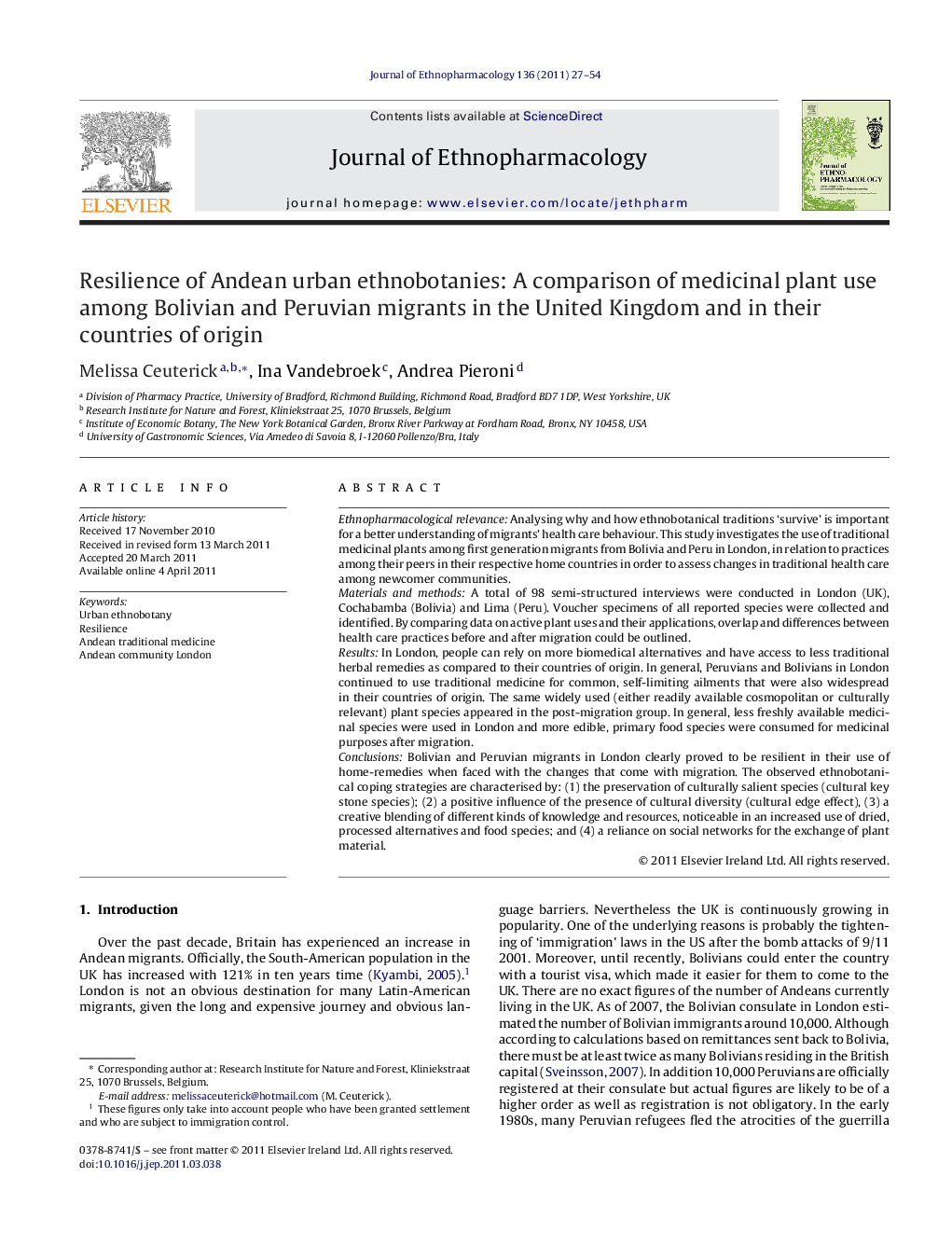| کد مقاله | کد نشریه | سال انتشار | مقاله انگلیسی | نسخه تمام متن |
|---|---|---|---|---|
| 2545701 | 1123995 | 2011 | 28 صفحه PDF | دانلود رایگان |

Ethnopharmacological relevanceAnalysing why and how ethnobotanical traditions ‘survive’ is important for a better understanding of migrants’ health care behaviour. This study investigates the use of traditional medicinal plants among first generation migrants from Bolivia and Peru in London, in relation to practices among their peers in their respective home countries in order to assess changes in traditional health care among newcomer communities.Materials and methodsA total of 98 semi-structured interviews were conducted in London (UK), Cochabamba (Bolivia) and Lima (Peru). Voucher specimens of all reported species were collected and identified. By comparing data on active plant uses and their applications, overlap and differences between health care practices before and after migration could be outlined.ResultsIn London, people can rely on more biomedical alternatives and have access to less traditional herbal remedies as compared to their countries of origin. In general, Peruvians and Bolivians in London continued to use traditional medicine for common, self-limiting ailments that were also widespread in their countries of origin. The same widely used (either readily available cosmopolitan or culturally relevant) plant species appeared in the post-migration group. In general, less freshly available medicinal species were used in London and more edible, primary food species were consumed for medicinal purposes after migration.ConclusionsBolivian and Peruvian migrants in London clearly proved to be resilient in their use of home-remedies when faced with the changes that come with migration. The observed ethnobotanical coping strategies are characterised by: (1) the preservation of culturally salient species (cultural key stone species); (2) a positive influence of the presence of cultural diversity (cultural edge effect), (3) a creative blending of different kinds of knowledge and resources, noticeable in an increased use of dried, processed alternatives and food species; and (4) a reliance on social networks for the exchange of plant material.
An average Andean medicine cabinet before and after migration (left: Cochabamba, Bolivia; right: London, UK).Figure optionsDownload as PowerPoint slide
Journal: Journal of Ethnopharmacology - Volume 136, Issue 1, 14 June 2011, Pages 27–54